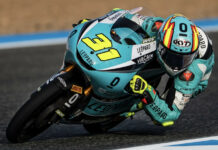PICKERINGTON, Ohio — The American Motorcyclist Association (AMA) has announced that it’s completed its review of an Environmental Protection Agency “Letter of Guidance” on the subject of motorcycle-emissions regulations. The July 25 letter, which serves to clarify existing regulations, came less than six months after meetings between EPA technical officials and AMA Government Relations, in which the AMA sought clarification of regulations for “kit” and “custom” motorcycles. “One of the AMA’s goals in meeting with EPA officials was to encourage the agency to issue just this sort of clarification,” said AMA Government Relations Vice President Ed Moreland. “We’re pleased that the EPA heard our concerns, along with the concerns of other groups and individuals, and did its part to help American motorcyclists know exactly what the regulations mean.” Kit bikes are motorcycles typically built by individuals using off-the-shelf components, while custom bikes are generally show bikes built by a business and sold to a customer. Under the regulations, a person is allowed only one kit motorcycle in their lifetime that is exempt from meeting EPA emissions requirements. For custom motorcycles, a builder may create and sell up to 24 bikes a year that don’t meet EPA emissions requirements, but those machines must be labeled as exempt and are show bikes that only rarely may be ridden. The AMA’s review of the recent Letter of Guidance confirmed that by using an EPA-certified engine, an individual will, in fact, be permitted to build a kit motorcycle without invoking the “one per lifetime” rule, subject to restrictions on exhaust systems, carburetors, fuel injection, and certain other components. From the EPA Letter of Guidance: “New highway motorcycles certified in this manner may be operated or re-sold without restriction, as long as all requirements of this procedure are met and the anti-tampering requirements of the federal Clean Air Act (42 U.S. C. sec. 203(a)) are met.” Before the EPA adopted these rules in 2004, it was illegal for anyone to ride a street motorcycle built in 1980 or later if it didn’t meet EPA emissions requirements. The EPA rules adopted in 2004 require new road motorcycles sold nationwide beginning with the 2006 model year to meet strict emissions standards adopted earlier by California. The first phase of the California standards went into effect with model year 2004, with a second tier scheduled to go into effect with model year 2008. The EPA adopted the same standards but with a two-year delay, meaning the first phase took effect with the 2006 model year, and the second phase will take effect in model year 2010. New motorcycles sold in California beginning with the 2004 model year, and nationwide beginning with the 2006 model year, may not emit more than 1.4 grams per kilometer of hydrocarbons and nitrogen oxides, and 12 grams per kilometer of carbon monoxide. The California standard gets tougher in model year 2008, with a limit of 0.8 grams per kilometer of hydrocarbons and nitrogen oxides and 12 grams per kilometer of carbon monoxide. The federal standard that goes in effect in model year 2010 is the same. When the EPA issued its final rules, the provisions related to kit and custom bikes were new, which the AMA notes also has led to the confusion surrounding them. All major motorcycle manufacturers’ streetbikes meet federal model year 2006 emissions standards, and several manufacturers’ products already meet the model year 2010 standards. The AMA actively voiced motorcyclists’ concerns to the EPA beginning in 2001, as the federal agency worked to put together the new emissions requirements. The EPA Letter of Guidance is posted on the agency’s website at http://www.epa.gov/oms/cert/dearmfr/cisd0615.pdf.
AMA Reviews New EPA Guidelines On Streetbike Regulations
AMA Reviews New EPA Guidelines On Streetbike Regulations
© 2006, Roadracing World Publishing, Inc.






